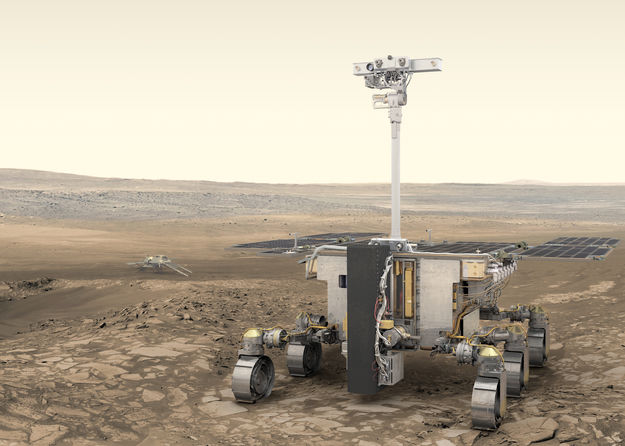The European and U.S. agencies have signed a statement of intent to explore concepts for missions to bring samples of martian soil to Earth.
The European Space Agency (ESA) and NASA have signed a statement of intent to explore concepts for missions to bring samples of martian soil to Earth. This would require at least three missions from Earth and one unprecedented rocket launch from Mars.
A first mission, NASA’s 2020 Mars Rover, is set to collect surface samples in pen-sized canisters as it explores the Red Planet. Up to 31 canisters will be filled and readied for a later pickup.
In the same period, ESA’s ExoMars rover (photo), which is also set to land on Mars in 2021, will be drilling up to two meters below the surface to search for evidence of life.
A second mission with a small fetch rover would land nearby and retrieve the samples in a martian search-and-rescue operation. This rover would bring the samples back to its lander and place them in a Mars Ascent Vehicle – a small rocket to launch the football-sized container into Mars orbit.
A third launch from Earth would provide a spacecraft sent to orbit Mars and rendezvous with the sample containers. Once the samples are safely collected and loaded into an Earth entry vehicle, the spacecraft would return to Earth, release the vehicle to land in the U.S., where the samples will be retrieved and placed in quarantine for detailed analysis by a team of international scientists.
The results of the mission studies will be presented at ESA’s council at ministerial level in 2019 for a decision to continue developing these missions.

